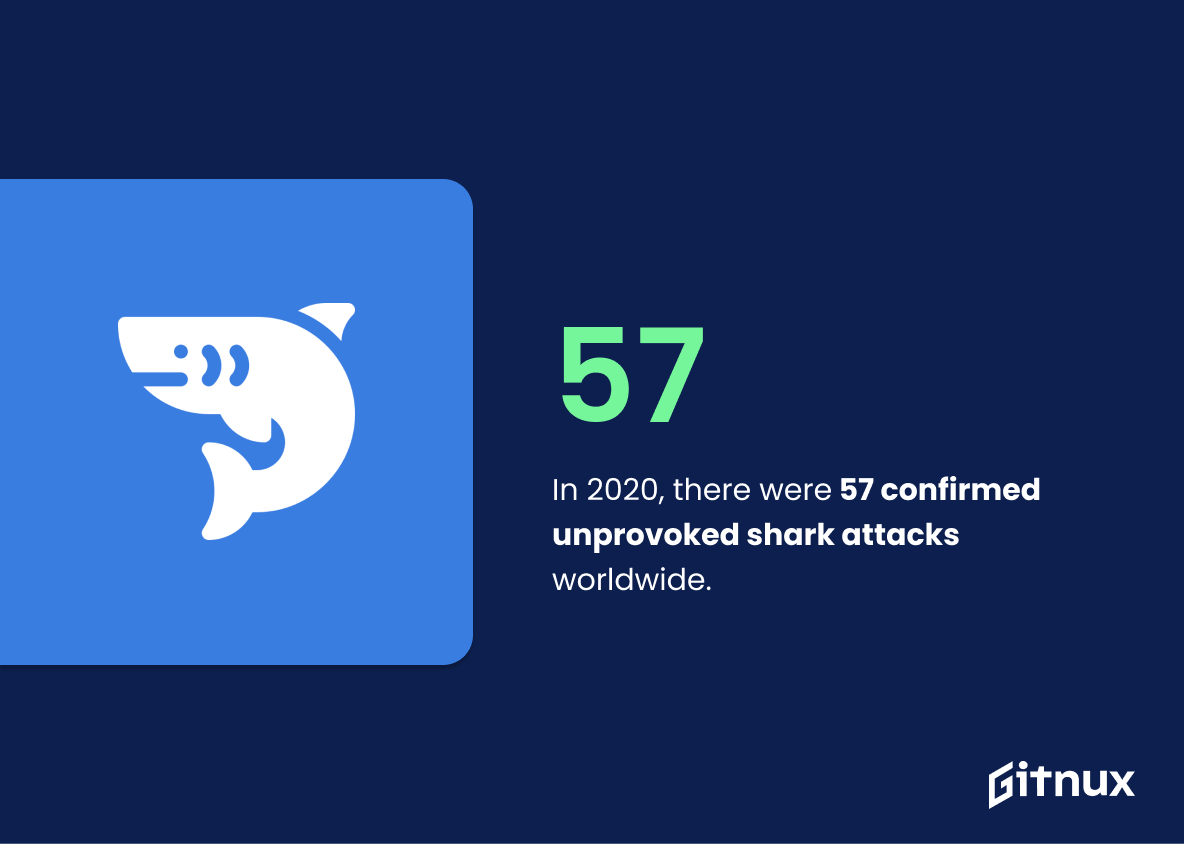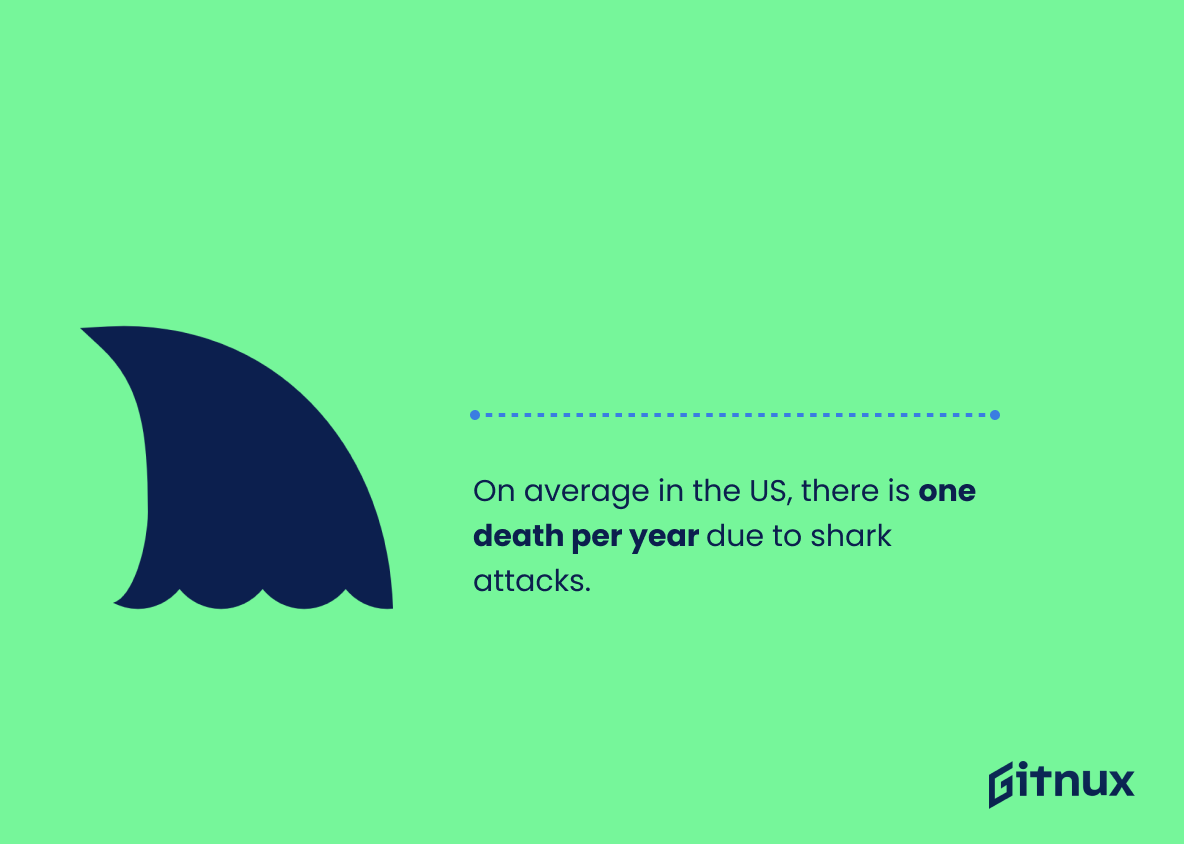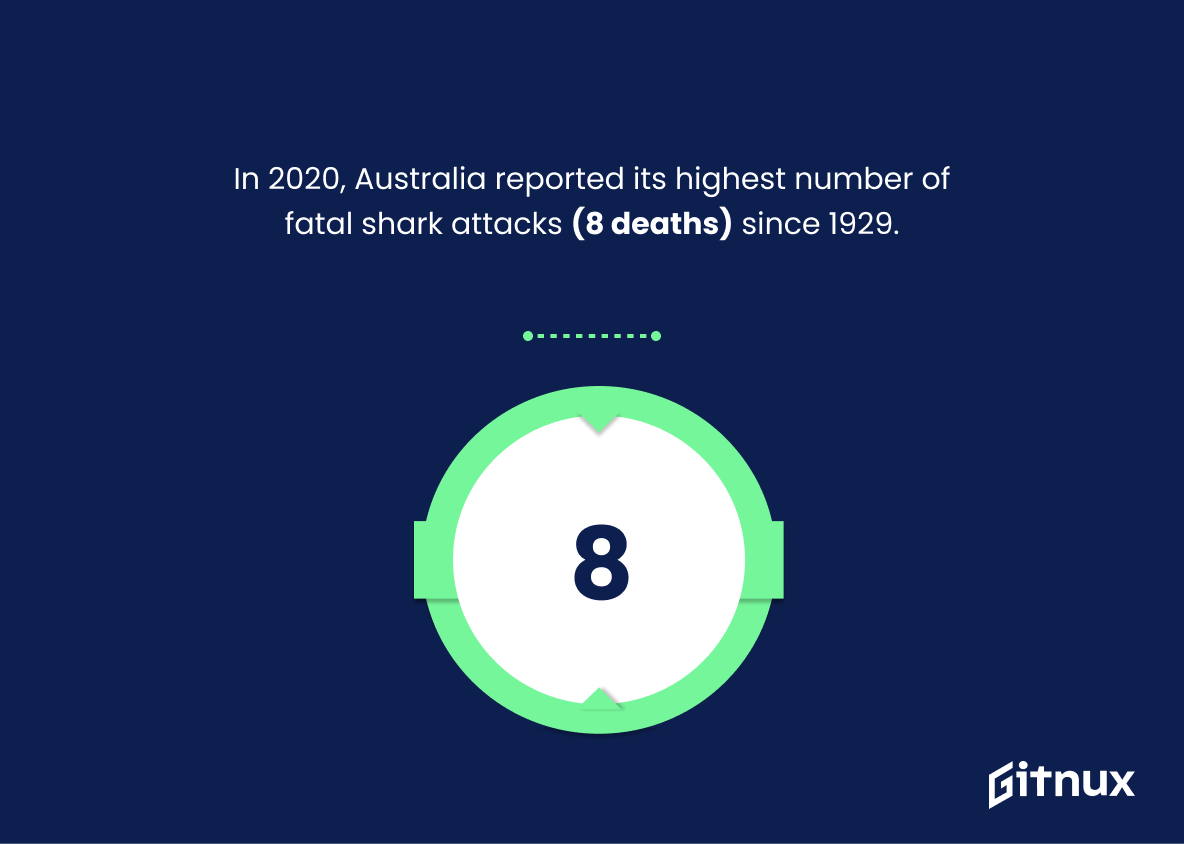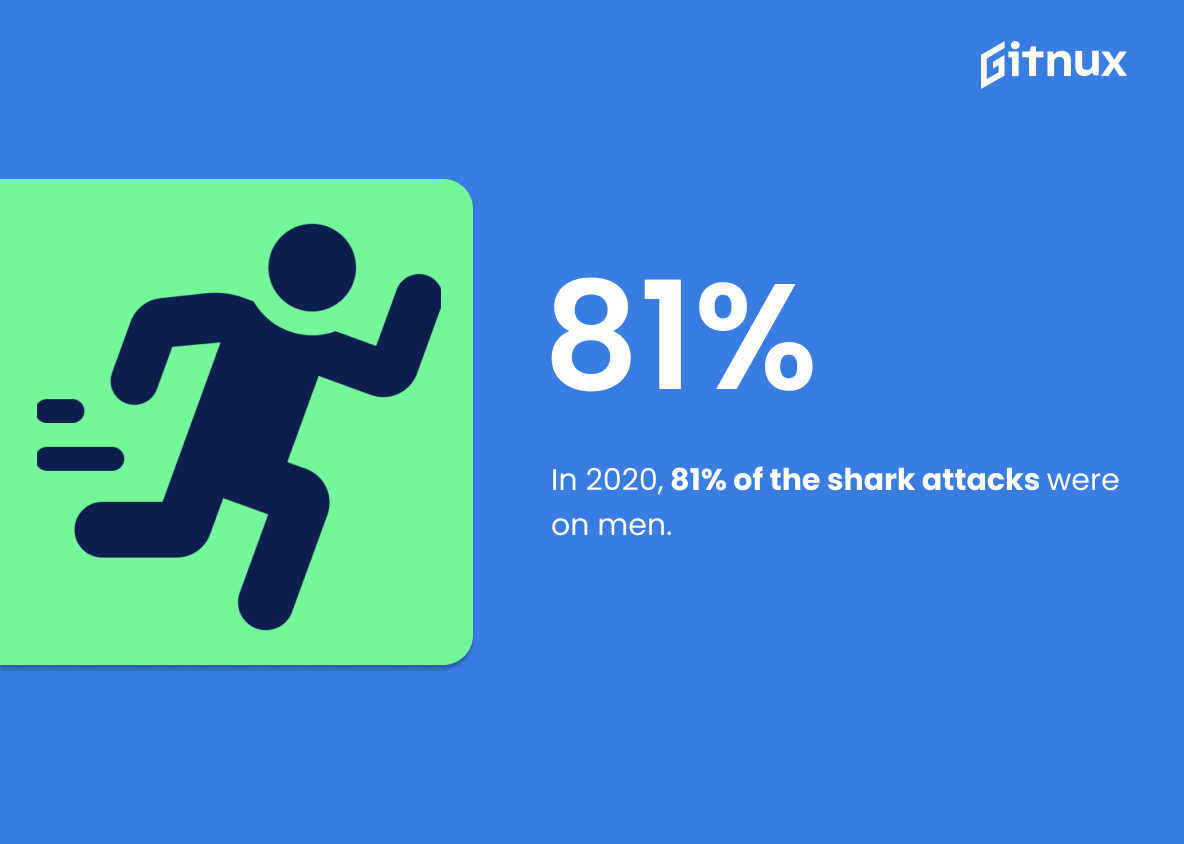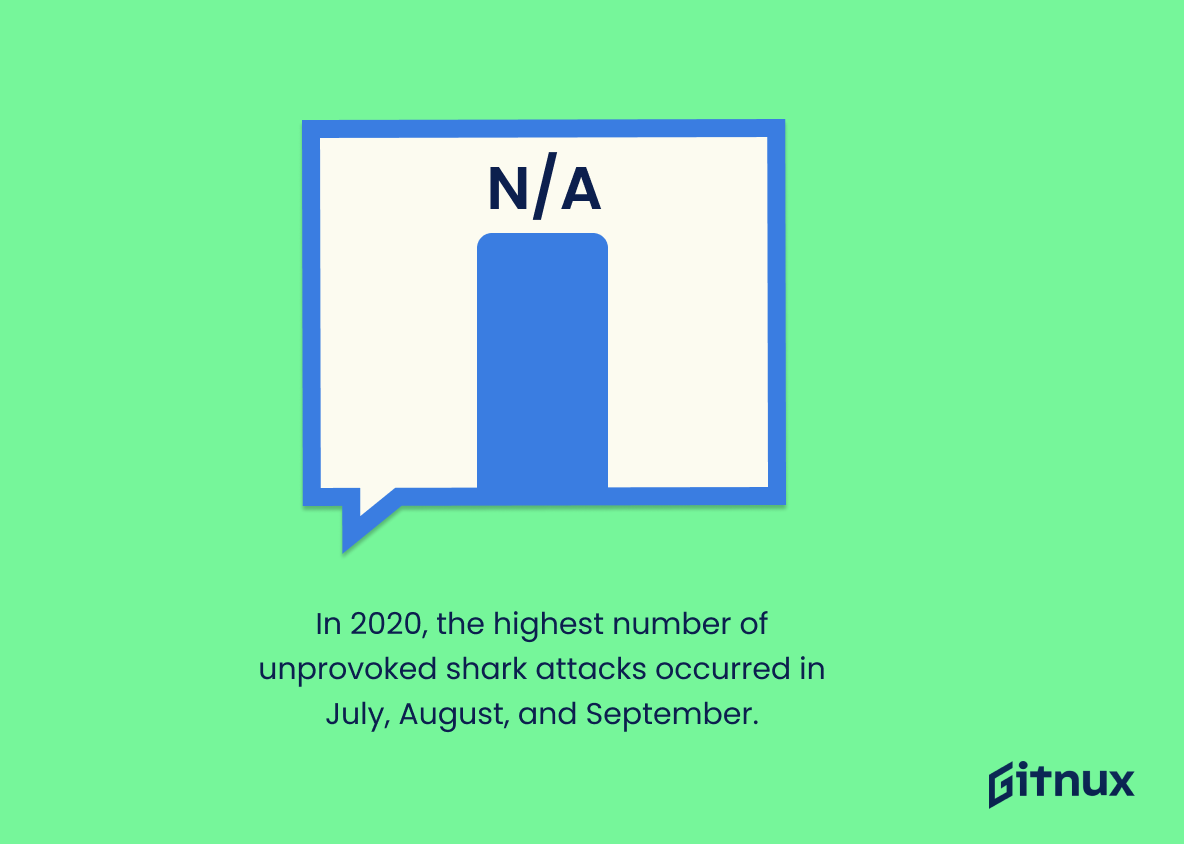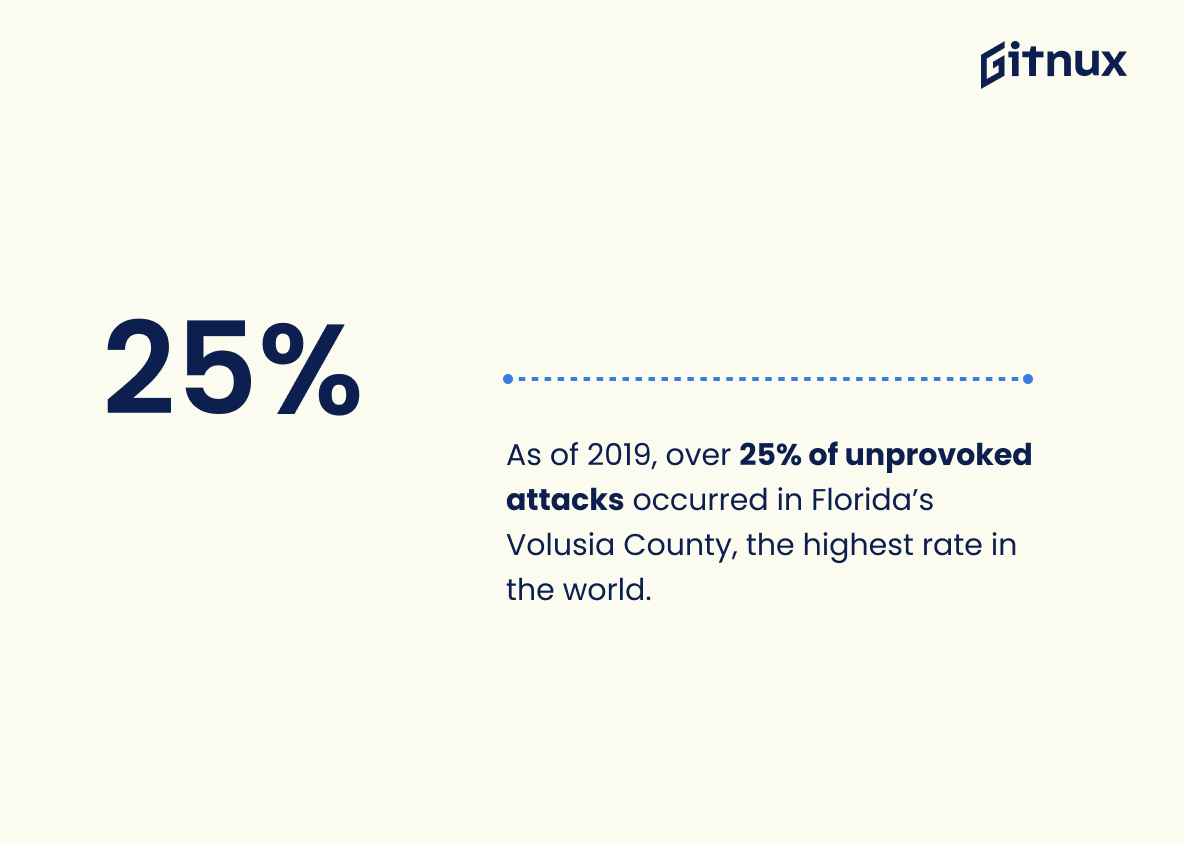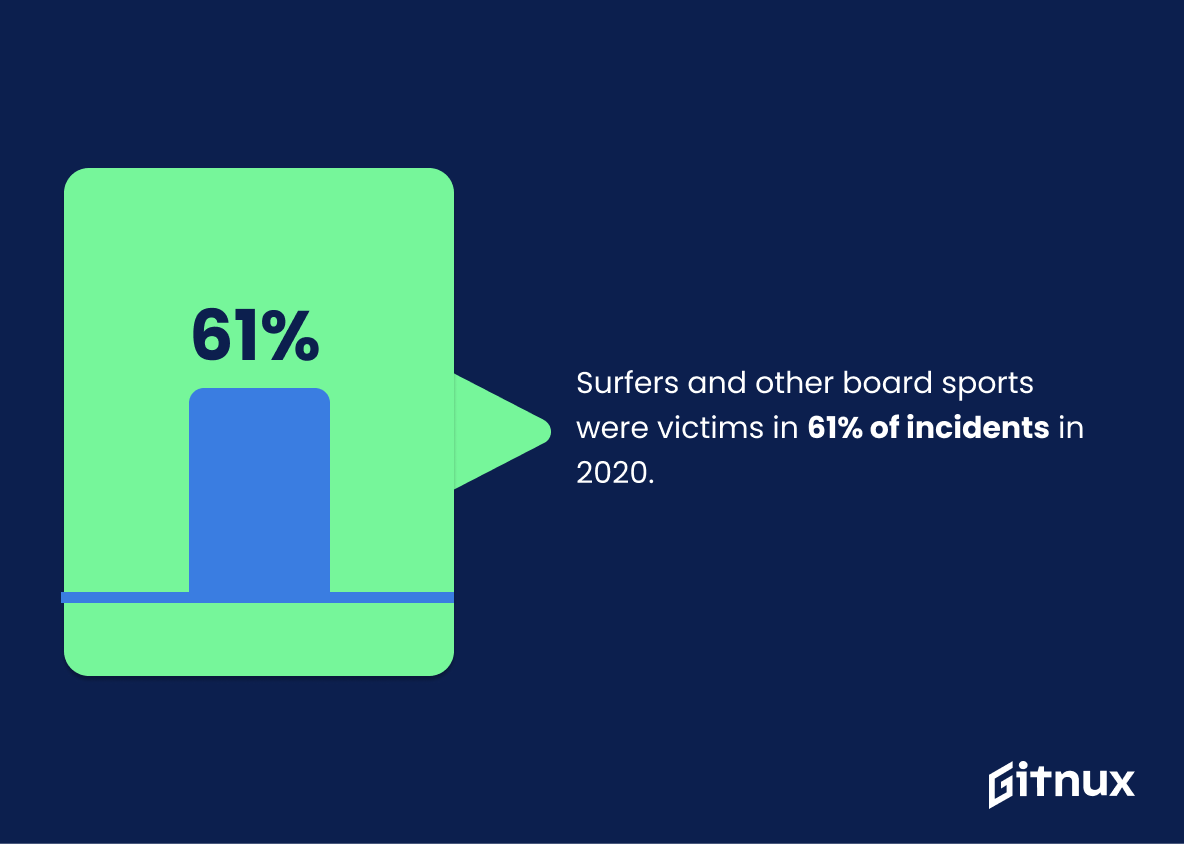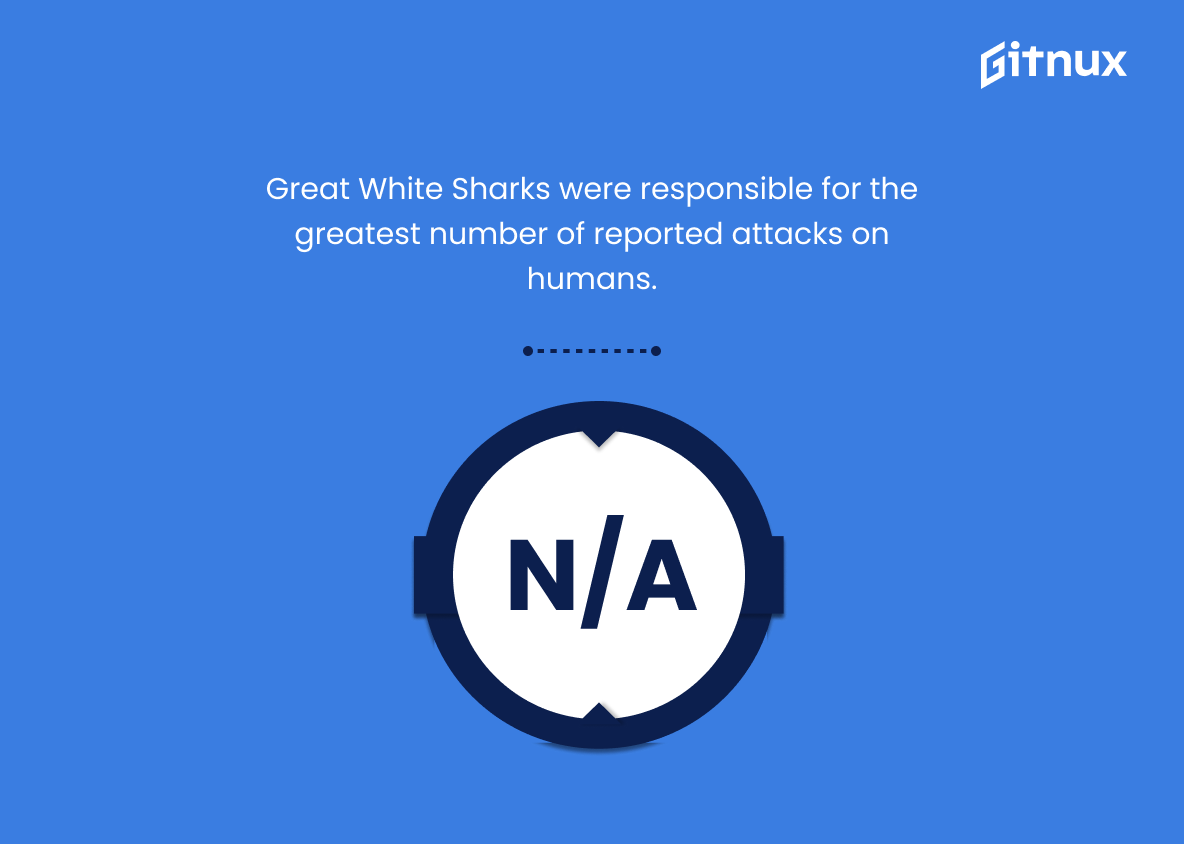The sheer mention of ‘shark attack’ tends to raise a few brows, stir in a lump of fear, and ignite a stream of thrilling hollywood scenes in our minds. But how often do these feared encounters happen in reality? Just how deadly can a shark attack be? In our quest to separate fiction from reality, we’re diving deep into the fascinating yet unnerving world of shark attack statistics.
Hold your breath as we navigate through the chilling waters of data, facts, and figures to give you an in-depth understanding of sharks – the fascinating creatures that rule the oceanic depths. Don’t let the frightful folklore fool you, there’s a lot more to shark attacks than what meets the eye.
The Latest Shark Attack Statistics Unveiled
In 2020, there were 57 confirmed unprovoked shark attacks worldwide.
Highlighting the citation that in 2020, there were 57 confirmed unprovoked shark attacks worldwide provides a global perspective on the prevalence of shark-human encounters. It acts as a crucial benchmark from which readers can gauge the scope of the problem and prompt further discussions on factors influencing such interactions.
Moreover, it serves as a stark reminder of the inherent risks associated with oceanic pursuits, encouraging a proactive approach towards marine safety. Finally, exploring such data can provide unique insights into the behavioral patterns of sharks, and hence, fostering shark conservation efforts.
The United States topped the world in unprovoked shark bites with 33 cases in 2020.
Highlighting 2020’s staggering figure of 33 unprovoked shark attacks positioning the United States as the global leader, enhances the gravity and depth of encounters with the ocean’s apex predator. This reminds us of the visible and invisible boundaries we cross when exploring the ocean, emphasizing the need for awareness, precaution, and respect for marine life.
This number symbolizes not only the human-shark interaction but also serves as a stark reminder of the need to better understand these beautiful creatures’ behavior patterns. It adds new layers of knowledge and reveals a critical facet of our relationship with nature, enriching the overall narrative presented in the blog post about Shark Attack Statistics.
On average in the US, there is one death per year due to shark attacks.
Recognizing the average number of fatal shark attacks in the U.S. each year brings an intriguing and vital perspective to discussions surrounding the magnitude and severity of shark-related incidents. For readers delving into our blog post about Shark Attack Statistics, this figure provides a compelling reality check – it underlines the relative rarity of such fatalities.
While media outlets often sensationalize shark attacks, this statistic paints a more objective picture, showing that they are, in fact, quite rare events. It serves as a gentle reminder that, contrary to popular belief, the likelihood of perishing from a shark attack is rather minimal. Yet, it also highlights the importance of staying informed and alert in shark-infested waters.
25% of the world’s shark species are currently threatened with extinction.
Integrating an intense figure like ‘25% of the world’s shark species are currently threatened with extinction,’ in a blog about Shark Attack Statistics, instills a deeper perspective. Beyond just illustrating the grim reality these majestic creatures face, it paradoxically highlights the diminished probability of shark-human encounters.
Essentially, this percentage acts as a stark counterpoint to the fear-inducing tales of shark encounters, moderating the menace associated with them. Simultaneously, it subtly underlines the critical issue of conservation, urging readers to realign their concerns from the realm of shark attacks and towards the compounding threats sharks are wrestling with.
In 2020, Australia reported its highest number of fatal shark attacks (8 deaths) since 1929.
Delving into the depths of shark attack statistics is no less thrilling than surfacing an ocean of discoveries. Unveiling the noteworthy figure that Australia recorded its highest number of fatal shark attacks (8 deaths) in 2020, a precedent unbroken since 1929, injects significant gravitas into our analysis.
This grim milestone inaugurates a nerve-rattling perspective on our interactions with these magnificent yet unpredictable creatures, signifying that the age-old dance between humans and sharks may be changing rhythm. Shedding light on this trend can bolster a pivotal discourse, awakening readers to additional safety measures and inciting undercurrents of concern for marine conservation.
In 2020, 81% of the shark attacks were on men.
Diving into the territory of the ocean behemoth, the shark, one striking revelation lurks beneath the waves: in 2020, men bore the brunt of shark attacks, making up a staggering 81% of total incidents. This makes one wonder, what lures these magnificent creatures towards men more often? It’s a thrilling question for marine enthusiasts, sociologists, gender studies experts, and indeed any brave soul who dares to dip into shark-infested waters.
As we navigate through the thrilling realm of shark attack statistics, this intriguing data point becomes a buoy that guides many discussions on human-shark interactions, gender dynamics in water activities, and the behavioral patterns of sharks. So, remember the digits, 81%, a percentage that frames a picture much larger and complex than just statistics. It paints a vivid narrative of human connection with the wild marine world and offers insights that could become vital for survival in the mysterious aquatic realm.
In 2020, the highest number of unprovoked shark attacks occurred in July, August, and September.
Throwing the spotlight on the intriguing correlation between the peak months of unprovoked shark attacks and summer vacation periods can offer the blog readers a clearer insight. These months – July, August, and September, coincide with increased beach attendance during summer vacations in many regions, leading to a potentially higher potential for human-shark encounters.
It’s crucial to inform the beach-going public about this trend, guiding them to exercise more caution during these months. Understanding this specific data point could contribute significantly to shark safety awareness, thus reducing the likelihood of such encounters.
As of 2019, over 25% of unprovoked attacks occurred in Florida’s Volusia County, the highest rate in the world.
Diving into the pulsating heart of these shark attack statistics, Florida’s Volusia County conspicuously bulges as a hotspot, boasting more than a quarter of unprovoked shark encounters worldwide as of 2019 leaps out at us. Like a beacon, it illuminates the true gravity and frequency of shark-human interactions.
As we navigate the depths of this issue, it allows us to pinpoint not just the broader risks associated with shark attacks globally, but to truly understand where these encounters are most concentrated, and potentially why. This gasp-inducing figure resonates beyond a mere number, propelling Volusia County to a pole position it probably rather not hold, but one that completely reshapes our understanding of shark incident geography.
Surfers and other board sports were victims in 61% of incidents in 2020.
Diving into the realm of Shark Attack Statistics, the aforementioned statistic serves as a significant buoy of insight, illuminating a strong correlation between board sport enthusiasts, such as surfers, and shark incidents. When enveloped by the 2020 data surf, the watermark of 61% victim incidents amongst this group is startlingly high.
This substantial majority suggests the potential danger lurking beneath the waves for those engaging in board sports, shedding light on the crucial need for precautionary measures, awareness campaigns and safety guidelines to safeguard these adrenaline seekers. It is indeed a wake-up call, echoing through our statistical landscapes, pushing shark safety to the forefront of discussions related to water sports safety. So, next time you grab your surfboard, remember to first dive into these shark attack numbers.
Great White Sharks were responsible for the greatest number of reported attacks on humans.
Shedding light on the formidable role played by Great White Sharks in the grand scenario of human-shark encounters amplifies our understanding of these apex predators. This statistical revelation serves as the heart of our discussion, throbbing with insights into the curious relationship between humans and the ocean’s most feared creatures.
It prompts a deeper inquiry into the behavioral patterns of Great Whites, why humans might be their preferred target, and most importantly, how such confrontations can be mitigated. Thus, this statistic is the cornerstone of our discourse, guiding us through the labyrinth of shark attack narratives and finally helping us paint a comprehensive picture of the hazards lurking beneath the ocean waves.
More than half of all shark attacks occur less than 100 feet from the shore.
Within the sphere of shark attack analysis, the statistic revealing that over half of these oceanic encounters transpire less than 100 feet from the shoreline emerges as a salient point of intrigue. It overturns the common misconception that venturing deep into the ocean’s vast expanses poses the greatest threat. Instead, it highlights the unexpected proximity to danger during casual, near shore water activities.
This piece of data serves as a pivot, swinging the conversation in the direction of understanding threats within seemingly benign waters, reinforcing the necessity of safety measures even at close quarters. Drawing attention to this statistic redirects public perception from the deep sea “Jaws” stereotype towards a more fact-based picture, thereby contributing substantial value to a blog post centered on shark attack statistics.
South Africa is home to 111 confirmed unprovoked shark attacks, and 27 fatal attacks.
In delving into the world of Shark Attack Statistics, South Africa’s record of 111 confirmed unprovoked shark attacks, and 27 lethal encounters, provides a startling perspective. This not only underscores the gravity of the hazards lurking in the waters around this nation, but also underlines its significance on the global stage of shark attack data.
It acts as a mirror, reflecting the dual narrative of human interaction with these ocean predators – their perilous side and the need for respect and caution. Through this statistic, the blog post paints a vivid image, making each number a cautionary note and calling attention to the symbiotic relationship we share with our marine counterparts.
Between 1580 and 2018, there have been 2,785 confirmed unprovoked shark attacks around the world.
Unraveling the numbers: From the period spanning 1580 to 2018, a startling figure of 2,785 confirmed unprovoked shark attacks from around the globe has been reported. This quantifiable data plays a pivotal role in helping blog readers dive deeper into the meticulous world of shark attack statistics.
It not only paints a clear picture of the magnitude of shark attacks throughout history but also sets the stage for understanding patterns, trends, and risk factors associated with these oceanic encounters. With this metric, readers are equipped with a precise starting point from which they can navigate the intricate labyrinth of data and metrics in the ocean of shark attack statistics, enabling them to dissect the grim reality these figures represent.
There were 89 shark bites reported in 2017, down from 174 in 2016.
In drilling down into the toothy realm of shark attack statistics, one cannot ignore the dramatic dive in reported incidents from 174 in 2016 to a mere 89 in 2017. This precipitous decrease of almost 50% in a single year shines a powerful spotlight on the fluctuating nature of shark-human encounters and underscores the importance of ongoing research and public education to reduce these scary encounters with our finned friends. Thus, the careful study and interpretation of this data not only demystifies the perceived threat of shark attacks but also guides strategies for sharks’ conservation and the safety of sea lovers.
Conclusion
In sum, shark attack statistics indicate that such events, while harrowing, are comparably rare. Our interactions with this crucial ocean predator should be guided by education and respect, rather than fear.
Ongoing research and data collection are key to understanding trends and contributing factors to these attacks, but the data consistently suggest that our fear of sharks is often unjustly inflated. So, the next time you step into the ocean, respect its inhabitants but remember, the odds are significantly in your favor.
References
0. – https://www.www.floridamuseum.ufl.edu
1. – https://www.www.sharks-world.com
2. – https://www.www.nsf.gov
3. – https://www.news.nationalgeographic.com
4. – https://www.www.bbc.com
5. – https://www.www.insider.com
6. – https://www.www.worldwildlife.org
7. – https://www.www.worldatlas.com
8. – https://www.www.nationalgeographic.com
